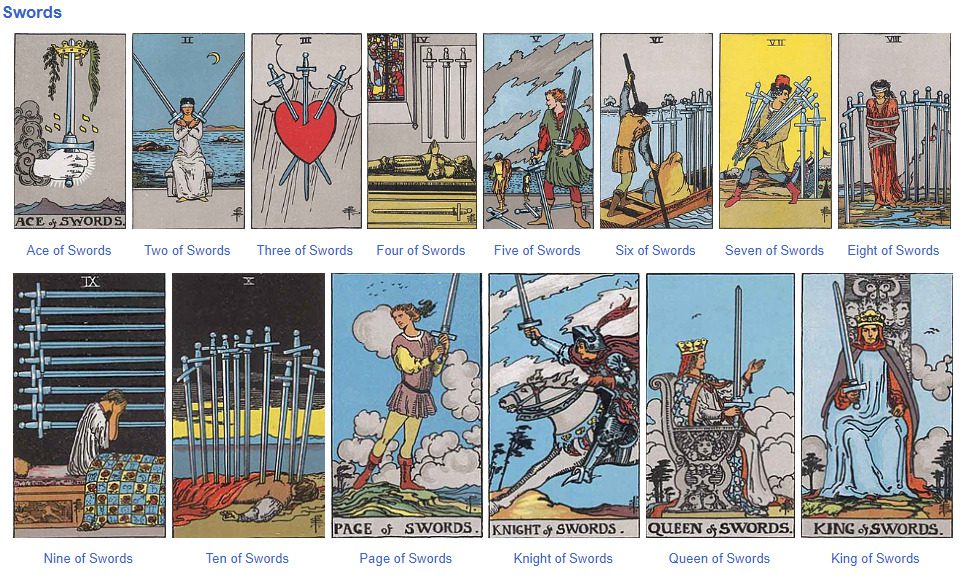Enter the sharp and insightful realm of the Tarot Swords, the suit symbolizing the power of the mind and the realm of intellect. As we unravel the meanings of each card, we invite you to grasp their profound messages, stimulating your curiosity and instilling a deeper understanding of the intricate world of tarot.
Our journey commences with the Ace of Swords, representing a breakthrough, clarity, and a sharp mind. When it soars skyward, it heralds clear thinking and intellectual power, but when it plunges into reverse, it warns of confusion, brutality, and chaos.
Next, we meet the Two of Swords, an emblem of difficult choices and indecision, much like a stalemate in a game of chess. Yet, when reversed, it speaks of situations where there might be no perfect choice, echoing the complexities of life decisions.
The Three of Swords pierces the air with its poignant message of heartbreak, suffering, and grief. But fear not, for when reversed, it offers a hopeful whisper of recovery, forgiveness, and the strength to move on.
The tranquil Four of Swords beseeches us to embrace rest, restoration, and contemplation. Flipped, however, it serves as a cautionary signal of restlessness, potential burnout, and stress, urging us to prioritize self-care.
Moving forward, the Five of Swords confronts us with unbridled ambition and the desire to win at all costs. Turned upside down, it nudges towards a desire to reconcile and the power of forgiveness.
As we glide on to the Six of Swords, we are introduced to the themes of transition and moving on, reminding us of the necessity to occasionally leave things behind. In reverse, it highlights the weight of emotional baggage and the difficulty of resisting necessary transitions.
The Seven of Swords strides in with an air of deception and trickery, urging us to consider our tactics and strategies carefully. When reversed, it can indicate a time to come clean or to rethink our approach.
The Eight of Swords captures a moment of self-imposed imprisonment and entrapment. Yet, flipped, it provides a promise of self-acceptance, a fresh perspective, and newfound freedom.
Further along, the Nine of Swords paints a somber picture of anxiety, hopelessness, and trauma. In its reversed form, though, it's a beacon of hope, encouraging us to reach out and confront despair.
The Ten of Swords is a stern reminder of life's hardships, embodying failure, collapse, and defeat. Yet, when reversed, it signals a reassuring message that things can't get worse and the only way is upwards.
In the court of Swords, we meet the youthful Page, the impulsive Knight, the perceptively complex Queen, and the disciplined King. The upright Page sparks curiosity and mental energy while the Knight valiantly defends beliefs. The Queen, in her wisdom, advocates clear-mindedness, and the King prioritizes truth. Reversed, these figures serve as warnings against deception, unpredictability, bitterness, and weakness.
As our exploration of the Swords concludes, remember, dear reader, that these cards serve not as predictors of destiny, but as tools for personal growth. They challenge us to wield our mental faculties wisely, to balance ambition with compassion, and to embrace change with grace and resilience. Let the Swords' wisdom cut through confusion, illuminate your path, and inspire you to create a life of intellectual richness and clarity. After all, the journey through the Swords, much like our own life's journey, is a quest towards understanding, awareness, and personal evolution.

